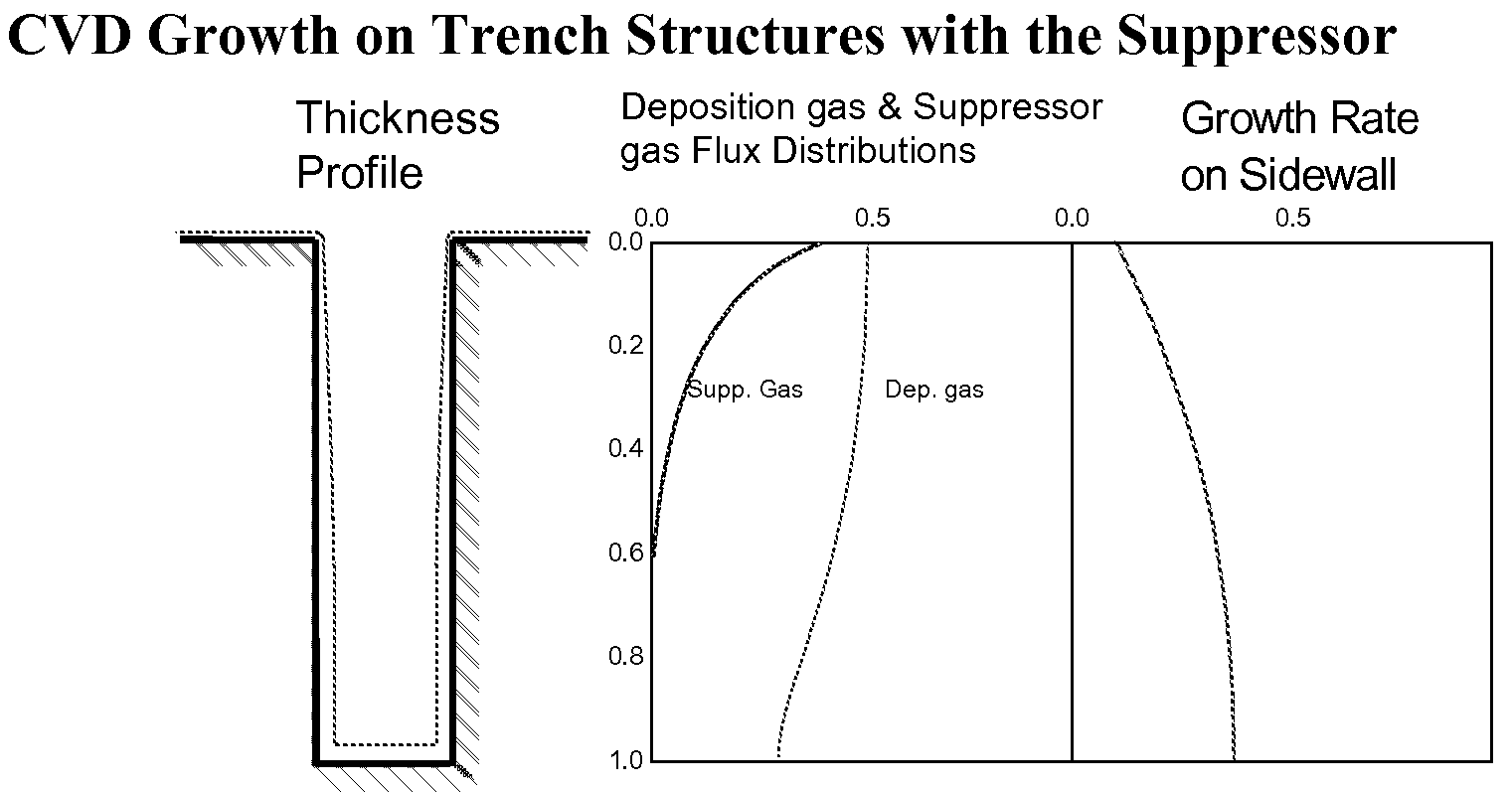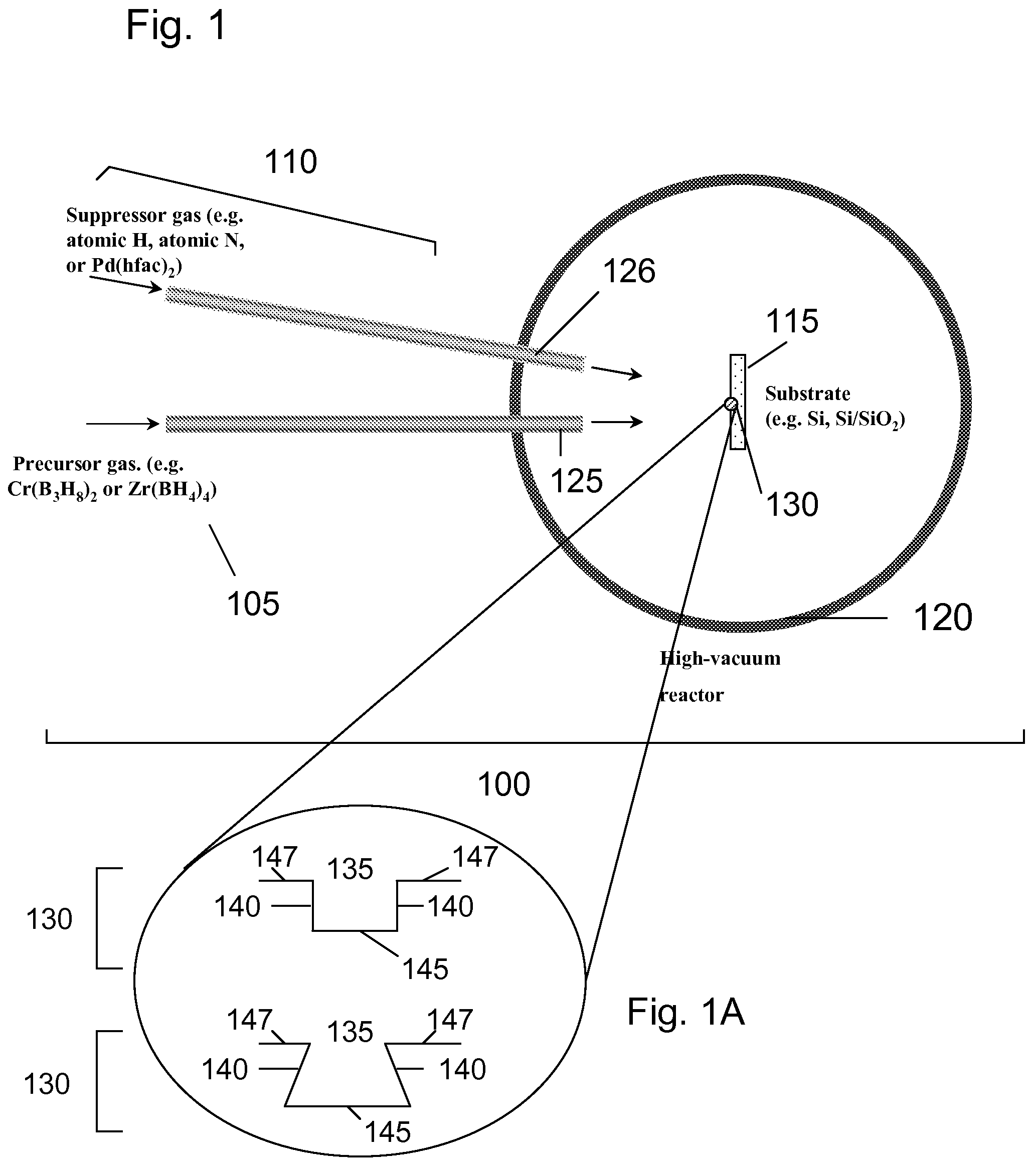Methods for coating and filling high aspect ratio recessed features
a technology of recessed features and coatings, applied in the direction of coatings, metallic material coating processes, chemical vapor deposition coatings, etc., can solve the problems of reducing device dimensions, significant challenges in filling or coating such high aspect ratio nanometer and micron size structures using conventional deposition methods, and reducing device dimensions, so as to improve conformal or superconform surface coverage and improve filling in recessed features
- Summary
- Abstract
- Description
- Claims
- Application Information
AI Technical Summary
Benefits of technology
Problems solved by technology
Method used
Image
Examples
example 1
Improved Coverage and Bottom-Up Filling of Recessed Features by CVD
1.a Introduction
[0094]A significant challenge associated with shrinking device dimensions in ULSI architecture (≦65 nm), and the multilevel copper metallization therein, is the need to conformally or superconformally coat or to fill high aspect ratio features. (In this example, the aspect ratio is defined as the depth of the feature divided by the width of its opening.) For example, typical metallization sequence includes a silicide of Ni or Co to form the first level of contact with the device. The silicide layer resides at the bottom of a via. This is followed by uniformly coating the via with adhesion (e.g. Ti) and diffusion barrier layers (e.g. TiN). Adhesion, diffusion barrier and seed layers (for Cu electroplating) are also needed on trenches that serve as interconnect lines after being filled with copper. The general problem is that the line-of-sight flux of growth species to the lower portions of the feature ...
example 2
Methods Using Molecular Suppressor Gases
[0106]The present invention includes processing methods using molecular suppressor gases. The example provided here is the CVD growth of HfB2 films using Hf(BH4)4 as a deposition gas. The growth is strongly suppressed by bis(hexafluoroacetylacetonato)palladium, Pd(hfac)2. On planar substrates, even a small flux of Pd(hfac)2 can significantly suppress HfB2 growth. In FIG. 12, the thickness of a HfB2 film grown on a silicon substrate was measured in real-time by spectroscopic ellipsometry. The precursor pressure was kept at 0.2 mTorr throughout the process. In the first 2.5 minutes, when Pd(hfac)2 was not present, the film thickness increased linearly with time, indicating a steady state growth. However, the growth stopped immediately after the Pd(hfac)2 flow (P≦10−6 Torr) was turned on, and did not resume until shortly after the Pd(hfac)2 flow was cut off.
[0107]FIGS. 11A and 11B show thickness profiles of HfB2 films on the sidewall of a trench ...
example 3
Application of the Present Methods for Infiltration Deposition
[0110]Another important application of the present methods is to fill in a porous or fibrous substrate, including the interconnected pores (interstities) in a geometrically defined object such as the packing of spheres or tubes, with the material(s) supplied by a precursor or a plurality of precursors, such as one or more deposition gases. This process is commonly referred to as infiltration deposition, chemical vapor infiltration, or similar. In these applications, the present methods are used to conformally or superconformally coat recessed features and or relief features in porous or fibrous substrates. FIG. 13 provides images of a mass of carbon nanotubes infiltrated with HfB2. FIG. 14 provides a micrograph showing a coated array of packed silica spheres (colloidal crystal) generated by infiltration CVD without using a suppressor gas.
[0111]In conventional infiltration deposition techniques, a substantial challenge ari...
PUM
| Property | Measurement | Unit |
|---|---|---|
| aspect ratio | aaaaa | aaaaa |
| width | aaaaa | aaaaa |
| aspect ratios | aaaaa | aaaaa |
Abstract
Description
Claims
Application Information
 Login to View More
Login to View More - R&D
- Intellectual Property
- Life Sciences
- Materials
- Tech Scout
- Unparalleled Data Quality
- Higher Quality Content
- 60% Fewer Hallucinations
Browse by: Latest US Patents, China's latest patents, Technical Efficacy Thesaurus, Application Domain, Technology Topic, Popular Technical Reports.
© 2025 PatSnap. All rights reserved.Legal|Privacy policy|Modern Slavery Act Transparency Statement|Sitemap|About US| Contact US: help@patsnap.com



